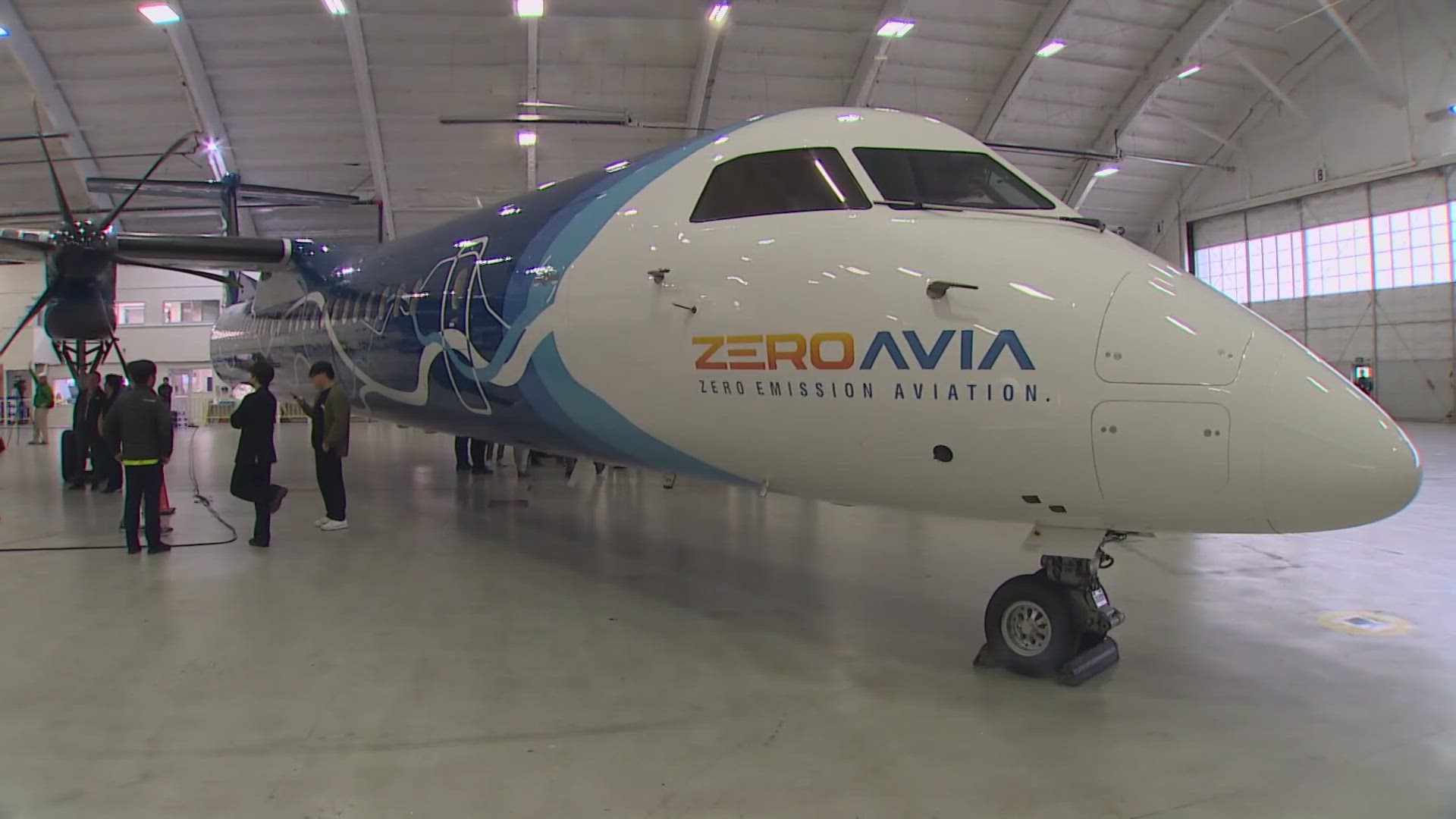SEATTLE — The future of aviation may hinge on hydrogen. A Washington airline just handed over one of its planes in an effort to bring the project closer to fruition.
“The world's largest hydrogen-powered commercial aircraft is being developed right here in the greatest, most innovative state: the state of Washington,” said Governor Jay Inslee.
What started out as an idea over coffee two years ago is now a reality for Pasha Saleh who is the head of corporate development at Alaska Airlines.
“What if we used the Q400?" Saleh asked. "It was just this crazy idea and we laughed about it and now here we are standing in front of it.”
Alaska Airlines handed over the keys of one of its retired Bombardier Q400 regional turboprop planes to ZeroAvia. The plane will be retrofitted with a hydrogen-electric propulsion system, according to the company.
“It’s going to make it economically possible to fly places that airlines wouldn’t consider serving today because there’s also an implied maintenance cost reduction with these motors,” said Saleh.
ZeroAvia is a company specializing in hydrogen-electric aviation. The company has successfully flown three Hydrogen-electric prototypes, but nothing as big as the Q400.
“This is of course the largest system that we’re putting together,” said ZeroAvia CEO Val Miftakohov.
At this point, the engine technology to get Alaska’s 737 fleet to zero emissions doesn’t exist.
“There are fundamental challenges, to de-carbonize the bulk of our fleet, the narrow-bodied planes, that’s going to require sustainable aviation fuel and that’s our primary focus,” said Saleh.
The lasting impact of hydrogen-electric aviation goes beyond zero emissions.
“Broader sustainability involves the noise, involves the ground pollution,” said Miftakohov.
“And so we’re changing not only the environmental impact of flying, but we’re changing the economics of who is flying and who gets to fly,” said Saleh.
The development is still in the early stages. The full process will take about five years. ZeroAvia plans to release a smaller zero-emissions plane in two years.

